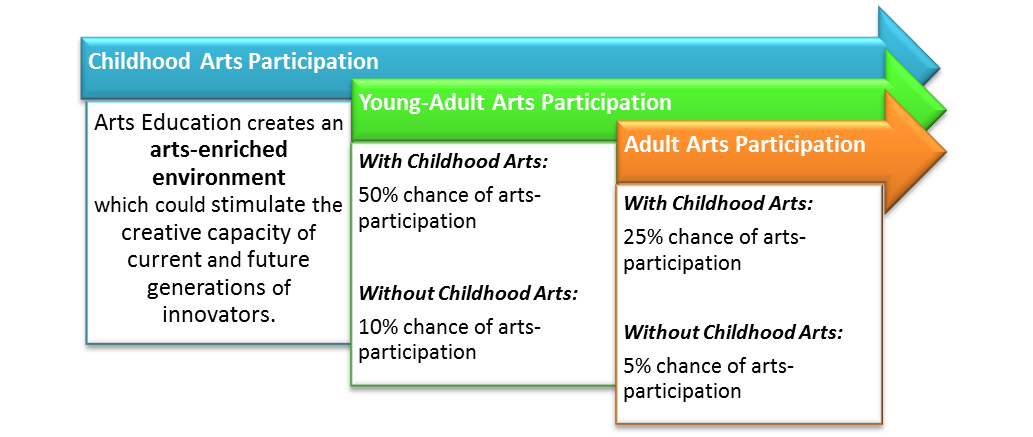The Arts Innovate
Arts Involvement Drives Innovation:
Dianne Warren, in Future Innovators: Developing Creativity Through K-12 Arts Education in Saskatchewan Schools brings home the value of the arts and arts education:
- “The STEAM movement does not position the arts in schools as a luxury, but rather as an absolute necessity to innovative thinking… the arts are essential to innovative thinking and behaviour.”
- “The students in school today are the 21st-century learners we’ve talked about for so long, and it behooves us to ensure that they acquire – through studies in the STEM subjects and the arts, through curriculum and partnerships with the professional arts community – the skills and abilities that will make them the future innovators of Saskatchewan” (1)
Turning STEM into STEAM:
C. Brooke Dobni, in Achieving Growth through Innovation: The Role of Arts Education in Supporting Economic Sustainability, states that “Innovative and high-quality arts education programs have a direct impact on students’ ability to learn, and to be creative. Individuals who are successful innovators have higher than normal exposure to the arts.” (2)
This is being proven in long-term studies: A study of honours science and technology graduates found that providing STEM professionals with significant arts exposure (throughout their lifetimes), may be essential to their creative capital potential, since:
- graduates majoring in science, technology, engineering, and mathematics (STEM) subjects are far more likely to have extensive arts and crafts skills than the average American;
- arts and crafts experiences are significantly correlated with producing patentable inventions and founding new companies;
- the majority believe that their innovative ability is stimulated by their arts and crafts knowledge; and
- lifelong participation and exposure in the arts and crafts yields the most significant impacts for innovators and entrepreneurs.” (3)
Lifelong benefits of arts-involvement depend on childhood arts experience: A child that participates in the arts has a 50% chance, on average of arts-participation as a young adult, and a 25% chance of with arts-participation as a mature adult (vs. 10% chance and 5% respectively without childhood arts-participation).

(1) Warren, Dianne. Future Innovators: Developing Creativity Through K-12 Arts Education in Saskatchewan Schools. Saskatchewan Arts Alliance, August 15, 2016. p12.
(2) C. Brooke Dobni, PhD, Achieving Growth through Innovation: The Role of Arts Education in Supporting Economic Sustainability, May 2014.
(3) Specifically, Michigan State University Honors College science and technology graduates (LaMore, Rex, Robert Root-Bernstein, Michele Root-Bernstein, John H. Schweitzer, James L. Lawton, Eileen Roraback, Amber Peruski, Megan VanDyke and Laleah Fernandez, “Arts and Crafts: Critical to Economic Innovation” Economic Development Quarterly 2013 27: 221 originally published online 28 April 2013. DOI: 10.1177/0891242413486186).